
Ausiàs March was a medieval Valencian poet and knight from Gandia, Valencia. He is considered as one of the most important poets of the "Golden Century" of Catalan literature.

Gandia is a city and municipality in the Valencian Community, eastern Spain on the Mediterranean. Gandia is located on the Costa del Azahar, 65 kilometres (40 mi) south of Valencia and 110 km (68 mi) north of Alicante. Vehicles can access the city through road N-332.

Safor is a comarca within the province of Valencia, Spain. The capital is the city of Gandia, but also includes the towns of Oliva, Piles and Daimús, among others. The beach area of Gandia, La Platja, is well known for its wild nightlife during the summer.
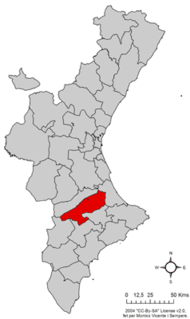
Vall d'Albaida is a comarca in the province of Valencia, Valencian Community, Spain.

Ròtova is a municipality in the comarca of Safor in the Valencian Community, Spain.

Alfauir is a municipality in the comarca of Safor in the Valencian Community, Spain.
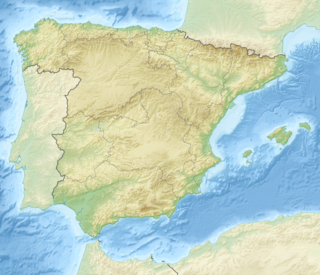
Llutxent is a town located in the eastern part of Spain, in the Valencian Community, within the county of the Vall d'Albaida, 80 km south of Valencia and 110 km north of Alicante. As of 2016, it is inhabited by 2,402 people.

Pinet is a municipality located in the north-east of the comarca of Vall d'Albaida in the south of the province of Valencia, Valencian Community, Spain, and some 82.6 km from the regional capital, Valencia.

Simat de la Valldigna is a municipality in the comarca of Safor in the Valencian Community, Spain. It is 50 km from Valencia, and 20 km from Cullera and Gandia. It is also near Xàtiva and Alzira.

Spanish Gothic architecture is the style of architecture prevalent in Spain in the Late Medieval period.

Friar Nicolás Borrás (1530–1610) was a Spanish Renaissance Catholic monk and painter, active in Valencia.
Pere March was a Valencian poet. He was the father of Ausiàs March and the uncle of Arnau March.

The Monastery of Sant Jeroni de Cotalba is a monastic building of Valencian Gothic, Mudéjar, Renaissance, Baroque and Neoclassical styles constructed between the 14th and 18th centuries, located in the municipal area of Alfauir, (Valencia), Spain, about 8 km. from the well-known city of Gandia.
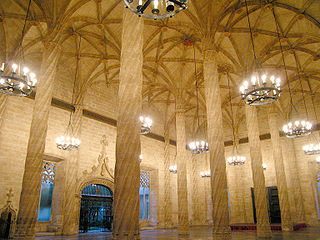
Pere Comte was a Spanish architect from Girona. He was one of the main Gothic architects of the Aragonese court of the period, and in particular in Valencia, where he directed the construction of numerous palaces. Pere Compte is considered a master of the Valencian Gothic art.
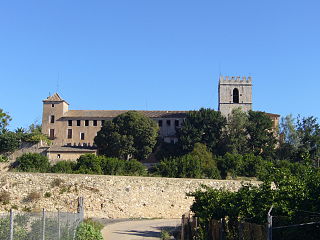
The route PR-CV 100 is a short-distance footpath of the Valencian Community (Spain) that goes from Ròtova (Valencia) to the Monastery of Sant Jeroni de Cotalba, in Alfauir (Valencia), crossing different natural places and monuments, saws, rivers, etc., all of them of great landscape and cultural interest.

The Route of the Borgias is a cultural route, that includes sites associated with the Borja or Borgia, located in their native Valencian Community, Spain. The marketing of the route was inaugurated in 2007.
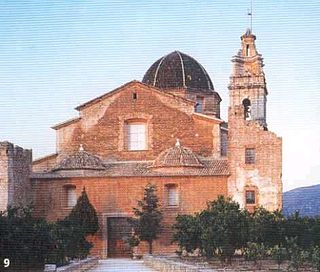
The Monastery of Santa Maria de Valldigna is located in Simat de la Valldigna (Valencia).

The Monastery of Santa Maria de la Murta is a former monastery of the order of the Hieronymites located in the Valley of La Murta in Alzira (Valencia), Spain.

The Route of the Valencian classics,, is a cultural route through the lands of the great classical writers of the Valencian literature of the Valencian Golden Age: Ausiàs March, Joanot Martorell and Joan Roís de Corella, the three related to the court of the Duke Alfonso of Aragon and Foix, "the Old".

Valencian Gothic is an architectural style. It occurred under the Kingdom of Valencia between the 13th and 15th centuries, which places it at the end of the European Gothic period and at the beginning of the Renaissance. The term "Valencian Gothic" is confined to the Kingdom of Valencia and its area of influence, which has its own characteristics.



























